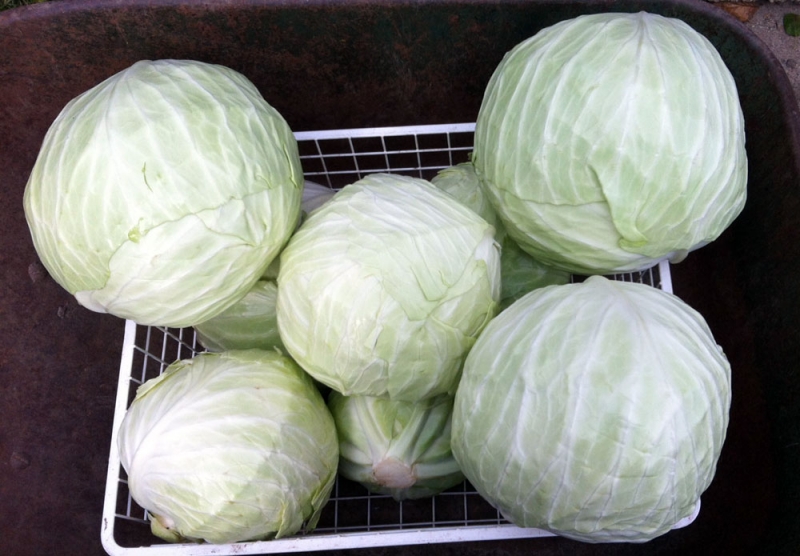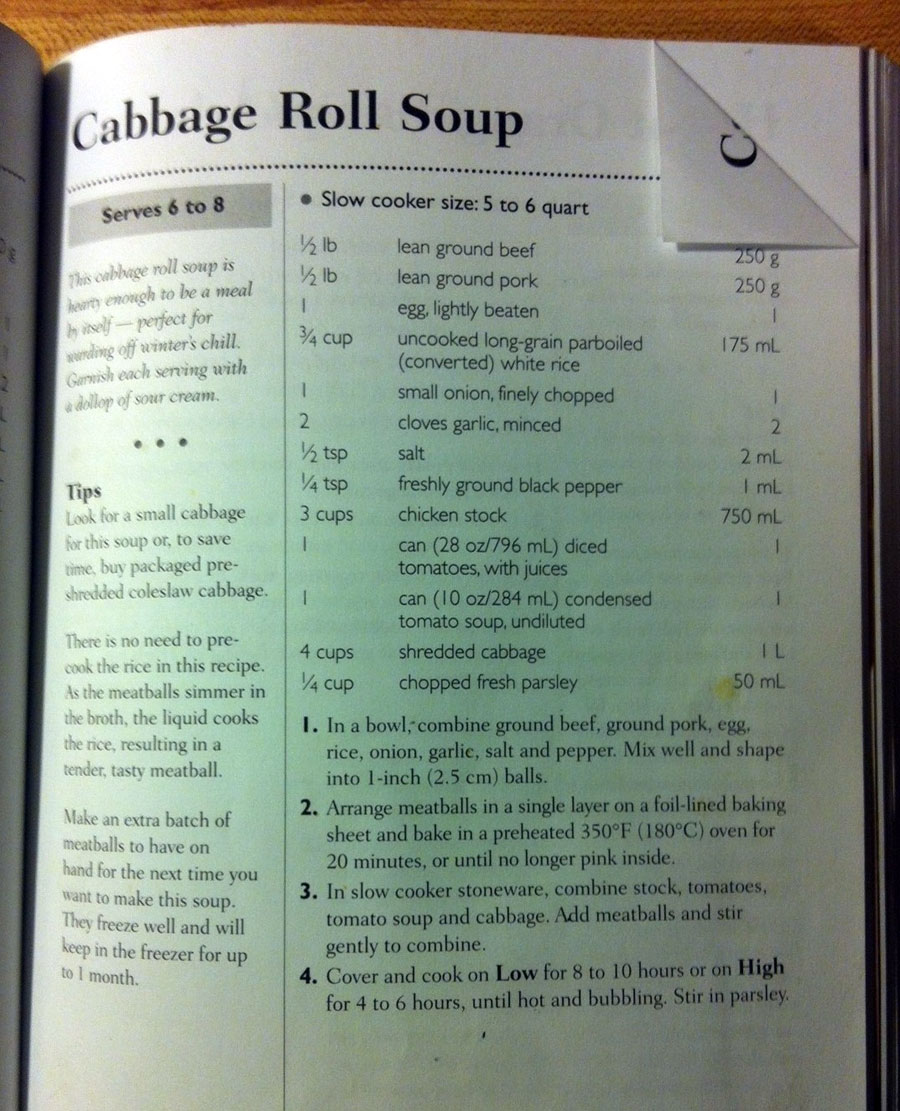

Posted by Nicole on Sunday, November 9th, 2014 6:44 pm

Can you believe we are still harvesting and reaping nature’s bounty from Gaia’s garden?! Last week on the roster was harvesting our late crop of cabbage! This year we decided to only grow one type of green cabbage – called ‘Bronco’, while some gardeners will choose to plant two crops – a mid-summer and then a later, fall crop. Our decision to plant only one cabbage crop was easily decided and the reasons are two-fold – first and foremost is that the space in Gaia’s garden is limited and other early garden veggies take priority and are abundant and so we don’t miss an early crop of cabbage, while the second reason, after much trial and error, we have conceded that early cabbage crops are just not a viable option for us as they are voraciously eaten by flea beetles which sabotages the entire crop (read Gran’s thoughts about cabbage and flea beetles from March 30, 2014 here: http://gaiasgardens.ca/blog/grans-garden-update1). This year was no different in that the few cabbage plants that we experimentally and hopefully planted out as an early crop were, once again, consumed by that pesky flea beetle; heartbreaking but such is the gardener’s life!
Our cabbage seedlings are ready to be transplanted outside generally in late July after the risk of the flea beetle has passed, after being started from seed around the end of June. The seedlings have at least three leaves per plant and we like to plant them 30-40 cm apart in rows about 60 cm apart. The greater the spacing, the larger the cabbage heads that you can eventually harvest. One tip that Gran suggests when transplanting cabbage, broccoli, and/or cauliflower is to put a piece of rhubarb (approximately 2 cm) in the bottom of each hole before planting the seedling. The thought behind this practice is that it helps to prevent a condition called ‘club root’ (check out this link for a full understanding of club root: http://www.organicgardening.com/learn-and-grow/club-root) and since it hasn’t ever wreaked havoc in Gaia’s garden we can only assume the rhubarb is working its magic! Another tip when garden-planning and planting your cabbage is to try and plan to plant a taller garden crop like corn or beans close by so that once these plants are well-established they can help to provide some afternoon shade over your cabbage or, if your crop is smaller, shade cloth is also another option that can be employed. We cover our crop with shade cloth in the early couple of weeks after transplant but more of a preventative measure against garden pests, and promptly remove once the heads start to grow larger.
Cabbage is not picky in terms of soil but we like to provide the best, nutrient-rich soil to our garden plants by adding in compost prior to transplanting. Compost tea (stay tuned for a future blog post detailing this!!) is often suggested to be used as a mid-season method to improve soil and can improve any yellowing of leaves of your crops with the added nitrogen. Once the cabbage has been planted we try and keep watering consistently, which sometimes is derailed by mother nature but we still try our best as uneven watering can cause sudden rapid growth and splitting of the cabbage head, as well as a host of possible diseases. After the cabbage has been in the ground for a week or so, Gran waters them with a solution of BT(K) or Bacillus thuringiensis, subspecies kurstaki and you can read more about it here: http://www.omafra.gov.on.ca/english/crops/organic/news/2012/2012-12a3.htm. We use this in Gaia’s garden to repel cabbage butterflies (white) and doing so prevents them from laying eggs on the plants. These eggs eventually will result in worms and destroy the cabbage crop if not prevented. The bacillus powder, is completely safe and approved for organic gardening, and is mixed with water and then sprinkled on our broccoli, cauliflower and cabbage plants. This mixture then is reapplied regularly until the veggies are almost full-grown, probably every two to three weeks dependant on how wet or dry the weather is in the summer and fall months.
In the fall months when the weather is consistently cool and your cabbage heads are firm to the touch you will then be ready to harvest and enjoy! The variety that we planted this year in Gaia’s garden, ‘Bronco’, matures in approximately 78 days from transplant which was at the end of this past July. To remove the heads take a sharp knife or garden spade and carefully cut the cabbage heads at the lowest point possible while also leaving a few outer loose leaves attached to the stem. Cabbage can be enjoyed either freshly harvested or stored for up to six months in a cool moist storage area. Split or less than desirable cabbage heads can be used to make sauerkraut. Be sure to check out a couple of our trusty cabbage recipes that we enjoy every fall using our garden grown cabbage and as Gran says…..”I love cabbage – in soups or coleslaw, of course, but also a sweet and sour version which I make a lot to accompany ‘meat and potatoes’ meals!!”:
http://www.organicgardening.com/learn-and-grow/cabbage
http://www.organicgardening.com/learn-and-grow/club-root
http://www.omafra.gov.on.ca/english/crops/organic/news/2012/2012-12a3.htm
http://www.gardeningknowhow.com/edible/vegetables/cabbage/harvesting-cabbage.htm

